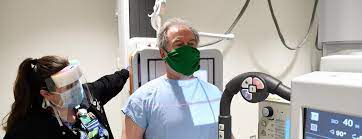Understanding the Differences and Uses of a Dexa Scan and an X-Ray Near Me
When it comes to medical imaging, various technologies are employed to diagnose, monitor, and treat a wide array of conditions. Among these, the Dexa scan and the X-ray are two commonly utilized methods, each serving distinct purposes. If you’re searching for “X-ray near me” or want to understand the benefits of a Dexa scan, this article will elucidate the differences, uses, and benefits of these essential diagnostic tools.
Table of Contents
ToggleWhat is a Dexa Scan?
Dual-Energy X-Ray Absorptiometry (Dexa) Scan is a specialized form of X-ray technology used primarily to measure bone mineral density (BMD). This scan is crucial in diagnosing and managing osteoporosis and other conditions that cause bone loss.
Purpose of a Dexa Scan:
- Bone Health Assessment: Dexa scans are primarily used to evaluate bone density and diagnose osteoporosis.
- Fracture Risk Prediction: By assessing bone strength, Dexa scans help predict the risk of fractures.
- Monitoring Bone Changes: They are used to monitor changes in bone density over time, particularly in patients undergoing treatment for osteoporosis.
Procedure:
- Non-Invasive and Quick: The Dexa scan is a non-invasive procedure that typically takes about 10 to 20 minutes.
- Low Radiation Exposure: It uses low levels of X-ray radiation to capture detailed images of the spine, hip, and sometimes the forearm.
- Preparation: Minimal preparation is required. Patients are usually advised to avoid calcium supplements for at least 24 hours before the scan.
When to Get a Dexa Scan:
- Postmenopausal Women: Women who have gone through menopause are at higher risk for osteoporosis and are often recommended to get a Dexa scan.
- Men Over 50: Men aged 50 and above who have risk factors for osteoporosis may also benefit from this scan.
- People with Specific Conditions: Individuals with conditions like rheumatoid arthritis, chronic kidney disease, or a history of fractures may need regular Dexa scans.
What is an X-Ray?
X-Ray Imaging is one of the oldest and most frequently used forms of medical imaging. It uses electromagnetic waves to create images of the inside of the body, particularly useful for viewing bones and detecting fractures, infections, and other abnormalities.
Purpose of an X-Ray:
- Diagnosing Fractures: X-rays are commonly used to detect bone fractures and breaks.
- Identifying Infections and Conditions: They can identify infections, arthritis, and other conditions affecting the bones and joints.
- Examining the Chest: Chest X-rays are used to diagnose conditions such as pneumonia, lung cancer, and other lung diseases.
- Dental Health: Dental X-rays help in examining teeth and jawbone structure.
Procedure:
- Simple and Fast: An X-ray procedure is quick and straightforward, usually completed within minutes.
- Radiation Exposure: While X-rays do involve exposure to a small amount of radiation, it is generally considered safe, especially for single or infrequent use.
- Preparation: Little to no preparation is required. Patients may be asked to remove jewelry and wear a hospital gown to avoid interference with the imaging.
Finding an X-Ray Near Me:
- Healthcare Providers: Primary care doctors or specialists can refer patients to nearby imaging centers.
- Hospitals and Clinics: Most hospitals and larger clinics have X-ray facilities on-site.
- Urgent Care Centers: Many urgent care centers offer X-ray services for immediate needs.
Key Differences Between a Dexa Scan and an X-Ray
Purpose and Usage:
- Dexa Scan: Specifically measures bone density to assess osteoporosis and fracture risk.
- X-Ray: Used to diagnose a wide range of conditions including fractures, infections, and abnormalities in various parts of the body.
Radiation Exposure:
- Dexa Scan: Involves very low levels of radiation, making it safe for repeated use in monitoring bone health.
- X-Ray: Involves slightly higher radiation levels compared to a Dexa scan but is still considered safe for diagnostic use.
Duration and Procedure:
- Dexa Scan: Typically takes 10 to 20 minutes and involves lying on a table while a scanner passes over the body.
- X-Ray: Generally quick, often completed within minutes, with patients either standing, sitting, or lying down depending on the area being imaged.
Accessibility:
- Dexa Scan: Available at specialized bone health clinics and larger medical centers.
- X-Ray: Widely available in hospitals, urgent care centers, specialized imaging centers, and many larger clinics.
Conclusion
Both Dexa scans and X-rays are invaluable tools in medical imaging, each serving unique and essential roles. A Dexa scan is the go-to method for assessing bone density and diagnosing conditions like osteoporosis, making it crucial for those at risk of bone loss. On the other hand, X-rays provide quick and effective imaging for diagnosing fractures, infections, and a variety of other conditions. Whether you’re looking for a “Dexa scan” for bone health assessment or an “X-ray near me” for a quick diagnosis, understanding the differences and purposes of these scans can help you make informed decisions about your healthcare.

